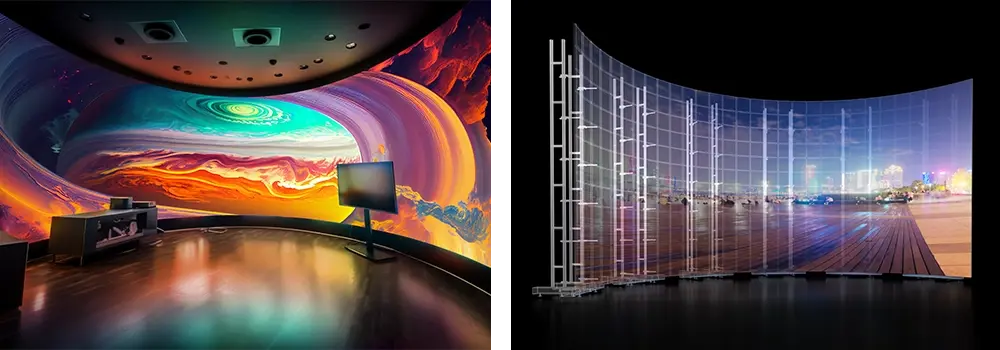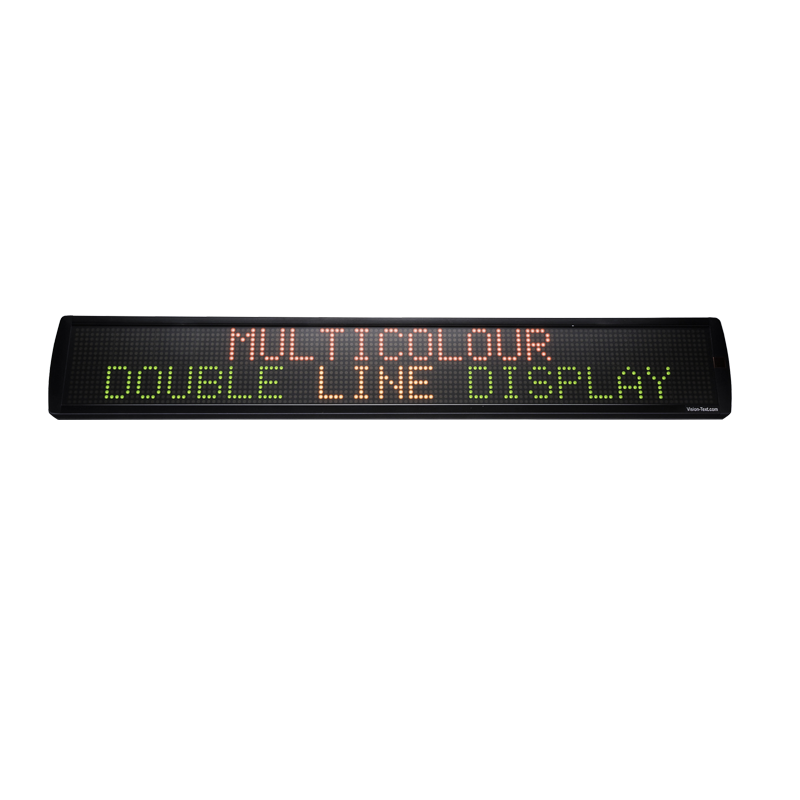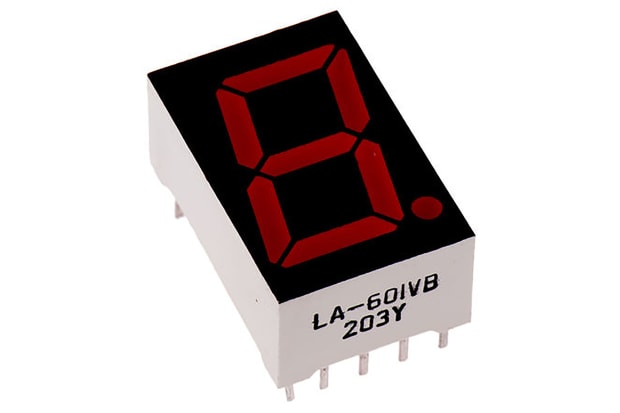Good Facts On Deciding On Outdoor Fixed Led Display
Wiki Article
What Is The Significance Of The Contrast Ratio And Brightness In Research On Led Displays?
The brightness and contrast ratio are crucial elements to be considered when looking into LED displays because they can significantly affect the visibility, clarity, and overall quality of the display, especially in different lighting environments. This is why they're crucial:
1. Visibility under Different Lighting Conditions
Brightness: The brightness of the display is measured in nits. It is the amount of candelas per sq. millimeter. In outdoor displays with bright sunlight (like direct sunlight) an extremely bright display (typically between 10,000 to 5,000 nuits) is necessary to ensure that the display content is clear. Indoor displays generally require less brightness (between 500 to 1,500 nits) however, the brightness can be adjusted to suit different conditions.
Applications: A high brightness is crucial if you are planning to use the display in brightly lit environments or outdoors. Insufficient brightness may render the display useless since the display's content could become washed or invisible in direct sunlight.
2. Image clarity and Image quality
Contrast Ratio: The contrast ratio is defined as the difference between the whitest and darkest blacks that a display produces. A higher level of contrast enhances the intensity and vibrancy of colors, while increasing clarity and sharpness. It is vital when displaying content that is dynamic such as videos or photos that are high-contrast.
Displays that have high contrast ratios can handle content that has different brightness levels. This includes films or ads as well as live broadcasts. A display with a low contrast ratio could make dark areas look gray and lessen the visual impact.
3. Color Accuracy and Visual Impact
Brightness, Color Accuracy Brightness can affect color accuracy. Color accuracy is improved by a display that has a consistent brightness. This is crucial for branding, advertising and other areas of content where accuracy of color is essential.
Perceived brightness and contrast: A display with a high contrast can make it appear more bright. Even if the two displays have the exact same nit rating the display with the higher contrast ratio appears to be brighter and has more eye-catching pictures.
4. Energy Consumption
Brightness and power efficiency The higher brightness levels generally need more energy. Therefore, it's important to balance brightness demands with energy efficiency, particularly when displays are used continuously or are in large-scale installations. Thanks to the advancements in LED technology, energy-efficient screens are now available that offer the highest brightness, while using less power.
5. Content Versatility
Brightness for different types of Content: The brightness and contrast requirements will differ depending on content type such as text, static image or a live video. Text content is an excellent example of this. A high contrast will ensure that text is read. Video content requires a balance between brightness and contrast.
Application: Adjustable levels of brightness and contrast are beneficial in settings where content changes frequently for example, display screens for advertising or events. This lets the display adapt to the various requirements of the material.
6. User Experience
Displays with brightness adjustment can enhance the user's experience by adapting to changes in ambient light during the day. This ensures that the display is accessible at all times, without causing eye strain or glare.
Contrast and Eye Comfort Eye Comfort - A high contrast ratio will reduce the strain on your eyes. This allows you to view the content for longer durations of time, which is ideal for displays at events, public spaces or retail environments.
Conclusion:
The contrast ratio and brightness are key factors to make sure that LED displays work well in the environment they are intended for providing content that is bright, clear and easily readable. The display's overall performance and experience for the user will be greatly affected the lighting conditions, whether indoors or outdoors in bright or dim conditions. These elements, in conjunction with the efficiency of energy and requirements for content you'll need to fulfill, will help you choose the best display. Take a look at the best smd screens for blog advice including digital display, led transparent display, church led wall, led a board, wall tv led, led in walls, outdoor led monitor, transparent display monitor, outdoor digital screens, led transparent screen and more.

What Is The Significance Of Weight And Portability In Led Display Research?
The size and weight of LEDs are important factors when selecting a display, particularly in specific applications. Why these factors matter:
1. Easy Installation and Setup
Weight: Lighter LED displays are more manageable during installation, especially in situations where displays require to be fixed to ceilings, walls or any other structure. Displays that weigh a lot of weight require strong support systems that could make installation more difficult and increase the cost of installation.
Portable Displays are perfect for trade shows, temporary installations and other events. They can be easily assembled and removed. Due to their lightweight design, they're easy to transported and can reduce the amount of time and effort required for each installation.
2. Application in rental and Staging
The LED panels need to be light and portable for rental markets as well as stage where the displays will often be moved from place to place. They enable quicker turnaround time between events, reduce cost of transport, and also reduce the chance of damage resulting from handling.
Modularity: Portable displays with LEDs typically are modular, which allows them to be assembled and disassembled easily. It is crucial to be able to do this when creating customized display configurations for different events.
3. Structural Requirements
Support Structures: Heavier LED displays require more robust and more complex mounting structures, which can add to the overall cost and complexity of the installation. Contrary to larger displays, simpler, cheaper structures can accommodate these displays, allowing them to be used in various environments.
Venue Restrictions: Some venues might have weight restrictions for their structures. These typically concern mounted on the ceiling or walls. Selecting a lightweight display will allow the installation to fit within these restrictions.
4. Transport and Logistics
Shipping costs The weight and dimension of LED displays can directly impact the shipping and handling costs. Less expensive displays are easier to ship, particularly for large-scale installations or international transportation.
Storage and handling Storage and handling: Lightweight displays and portable displays take up less space. This reduces the logistics burden and is perfect for businesses that have to move displays around often.
5. Flexibility in use
Configurability. Lightweight, portable displays typically have modular design and can be configured with various sizes and shapes to accommodate the requirements of different applications. This is useful in creative installations which require a flexible design.
Versatility of application: These display can be used in numerous settings - from small outdoor pop-ups to large-scale events. They provide versatility unlike other displays, which are heavy and bulkier, can't match.
6. Safety Factors
Displays that are lighter reduce risk They are more secure to handle and install, so there is less chance of damage or accidents. It is vital in areas with frequent adjustments or movement of the display.
Compliance: Weight limits can be determined by safety regulations in some instances, particularly for installations located in public spaces. For compliance reasons, it's essential to check that your display is in compliance with the regulations.
7. Energy Efficiency
Even though it isn't directly associated with weight or size Light displays are typically built with energy efficiency in mind as a top priority. LED displays that are portable use less energy, which may be beneficial for areas that are not able to use electricity, or for areas where running costs are a major factor.
Conclusion:
LED displays are extremely light and portable product. This is particularly important for applications that involve frequent movement, temporary installation, or areas with structural limitations. These factors not only influence the ease of transporting and setup however, they also affect the flexibility and security of the display. When evaluating LED displays it's crucial to focus on weight and portability when the application you're considering requires frequent relocation, quick setup, or compliance with specific structural or safety requirements. Read the recommended led rental screen for site recommendations including flexible led screen display, led on screen, led screen, led wall tv, led board, flexible led display screen, board led, church led wall, led screen display, translucent led screen and more.

How Important Is Cost, Roi And Energy Efficiency When Analyzing Led Displays?
Cost and ROI (Return on Investment), as well as energy efficiency are highly crucial when it comes to researching LED displays since they directly impact the viability of financial investment, long-term benefits, and cost of operation for the investment. Each one of these aspects have their own significance.
1. Initial Cost
Budget: The price of the initial installation of LED displays is a crucial aspect to consider for any project. This is not just the price of the display and any mounting frameworks or accessories that may be required.
Quality and. Though displays that are priced lower may appear appealing initially, they may come with compromises on quality, durability or other features. The initial cost should be evaluated against the performance and lifespan of the display.
Application: If budgets are limited, it is important to carefully weigh the cost of a display against its performance. In some cases, high-end displays may be required to promote important projects such as advertising on the most prominent sites. Sometimes, less economical options could be adequate in environments which are less demanding.
2. Return on Investment (ROI)
Revenue Generating: ROI is usually tied to the ability of LED displays to create income. This can be through advertisements, customer engagement or brand visibility. A display that has a compelling message that draws attention to it will provide a good ROI, either through advertising revenue or generating sales.
Durability and Longevity Displays with longer life spans and higher durability are likely to offer a better ROI, as they require less maintenance and replacement. It is worthwhile to invest in it in the end.
Effect of features on ROI Features like high resolution large viewing angles, wide resolution and brighter displays can increase the upfront cost but can greatly enhance the effectiveness of the display resulting in higher ROI due to increased the level of engagement of viewers and better the ability to see.
3. Energy Efficiency
Operating Costs The energy efficiency of LED displays is essential in reducing operating expenses. Displays that use less power will result in lower power bills. This is particularly important when it comes to large displays or those that are operational 24/7.
Environmental Impact Energy-efficient display contributes to the sustainability goals by decreasing the carbon footprint. This is important to companies and other organizations that focus on environmental responsibility or who must meet regulations regarding energy usage.
Long-Term Cost Savings: Although energy-efficient displays are more expensive in cost at first, they reduce the cost in energy over the course of their lives, thereby increasing the overall ROI.
Application: If installed in areas that have high electricity costs or in large scale deployments energy efficiency can make a an impact on the total operating cost.
4. Total Cost of Ownership
Maintenance and repairs. The total cost is comprised of the purchase price as well as costs for repairs, maintenance and possibly downtime. TCO is usually lower for displays that are durable and last longer, which makes them a better long-term investment.
Enhancements and Scalability. Take into consideration the possibility of scaling or upgrading the display. A modular display that is able to be updated or expanded at the least expense is the best long-term investment.
Applications: In environments in which displays could be anticipated to last for a long period of time, such as corporate settings, public places, or retail areas with a high volume of traffic, a focus on TCO will ensure that the investment is efficient and cost-effective.
It is possible to finance the purchase through various options.
Flexibility in Financing - Many companies offer flexible financing options which can help to reduce the initial cost of high quality displays. This is especially helpful for companies that need to reduce their cash flow but continue to invest in high-quality digital signage.
Renting options could impact ROI too, as they allow businesses the opportunity to upgrade to more advanced technology without a huge initial investment. They also ensure that displays are up-to-date and can provide a substantial return.
6. Market Competitiveness
Cost in comparison to. Cost and ROI of LED displays could affect your competitiveness. An effective display can make you stand out from your competition to attract more customers and customers, as well as provide more return on investment.
Application in highly competitive fields like retail or entertainment, investing in higher-quality displays that deliver better ROI could give you an advantage.
Conclusion:
To determine the benefits and value of an investment in a display with LEDs it is crucial to take into account factors like cost, ROI, and energy efficiency. The performance of the display will be improved by balancing initial costs and expected returns on the investment. These factors are essential for making a well-informed choice that is in line with your budget, operational goals and long-term plan. View the top flexible advertising boards for website advice including led video wall panels, video walls, transparent led screen, outdoor led panel, led rental screen, outdoor display led, screen led display, led wall panels, led panel rental, led board and more.
